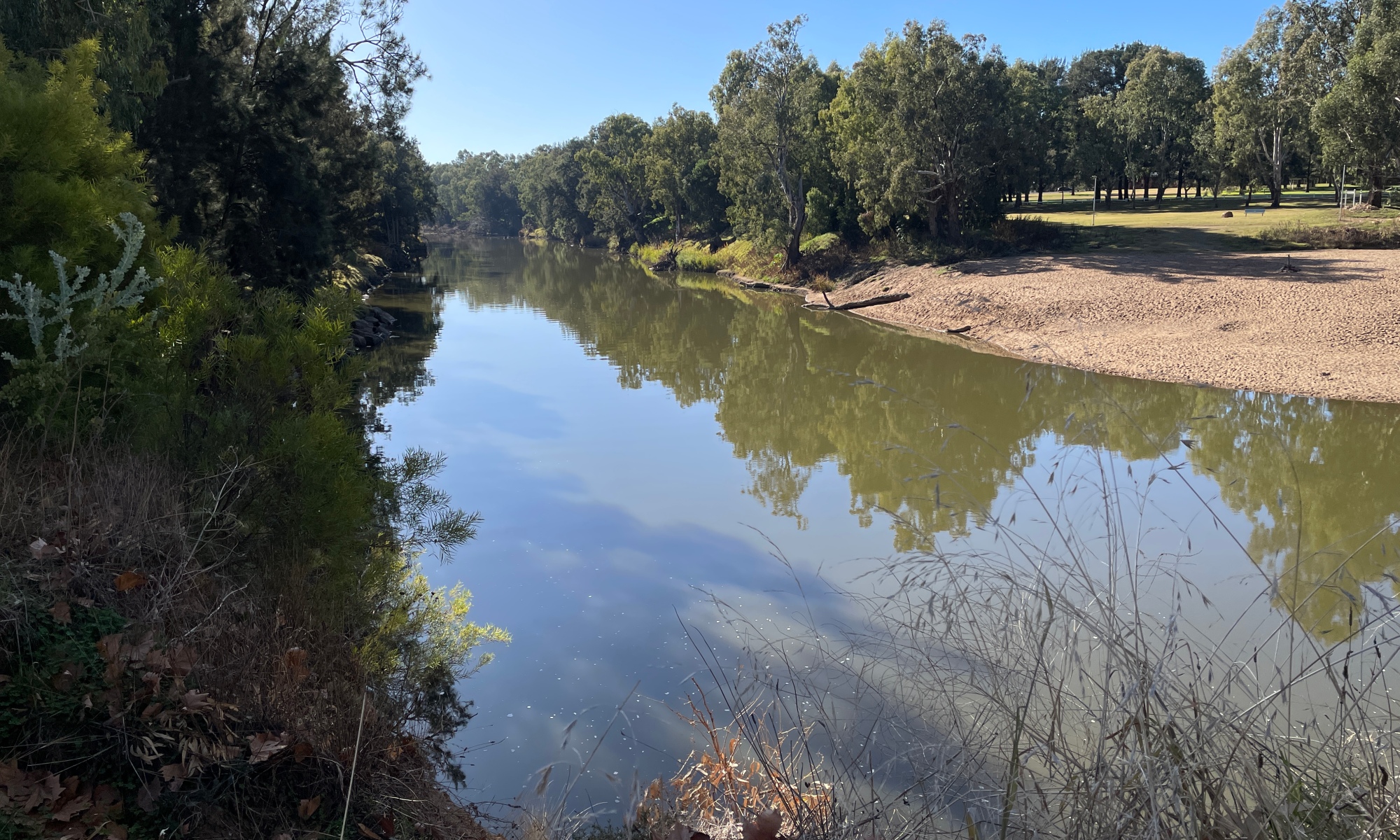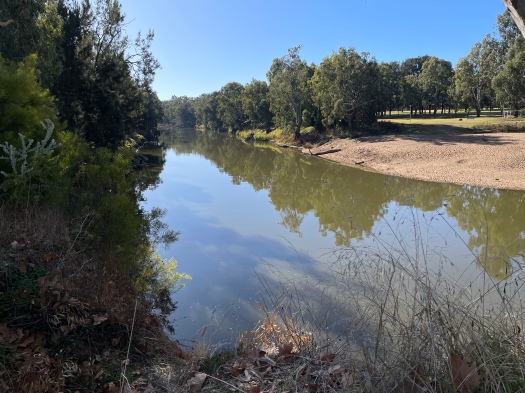
On a walk around my local river over the weekend, I was listening to podcasts* I rarely have time for, enthralled by not only the Scottish accents and fluent speakers of Scottish Gàidhlig—a language I’ve been learning for several months, but ideas of connection to land, language shaped by the land and weather, generational trauma in people (Gaels) and the land, and the importance of storytelling.
Thankfully the podcasts were engaging enough to take my mind off the finger and face-numbing cold and the mindless act of walking for the sake of walking—something I’m not a fan of, but in great need of to build up my fitness again after injury and illness over the past six months. This walk gave me the opportunity to just listen.
This particular 5.5km recreational loop runs either side of the Wambuul Macquarie River, through the centre of the regional city of Dubbo in Central West NSW. It’s essentially an urban environment, so even though I avoided the regular Saturday morning ‘park run’ crowd, there’s traffic, Saturday morning sport, and other walkers with their dogs and children. On the CBD side of the river, a freshly broken wine bottle lies on the side of the path, plastic water bottles and packets float on the river’s edge, and occasionally there’s abandoned dog poo to watch out for. For most of the walk there’s very little to listen to in the way of natural riverine sounds. I find the absences resulting from the intersection of human and more-than-human increasingly disturbing.
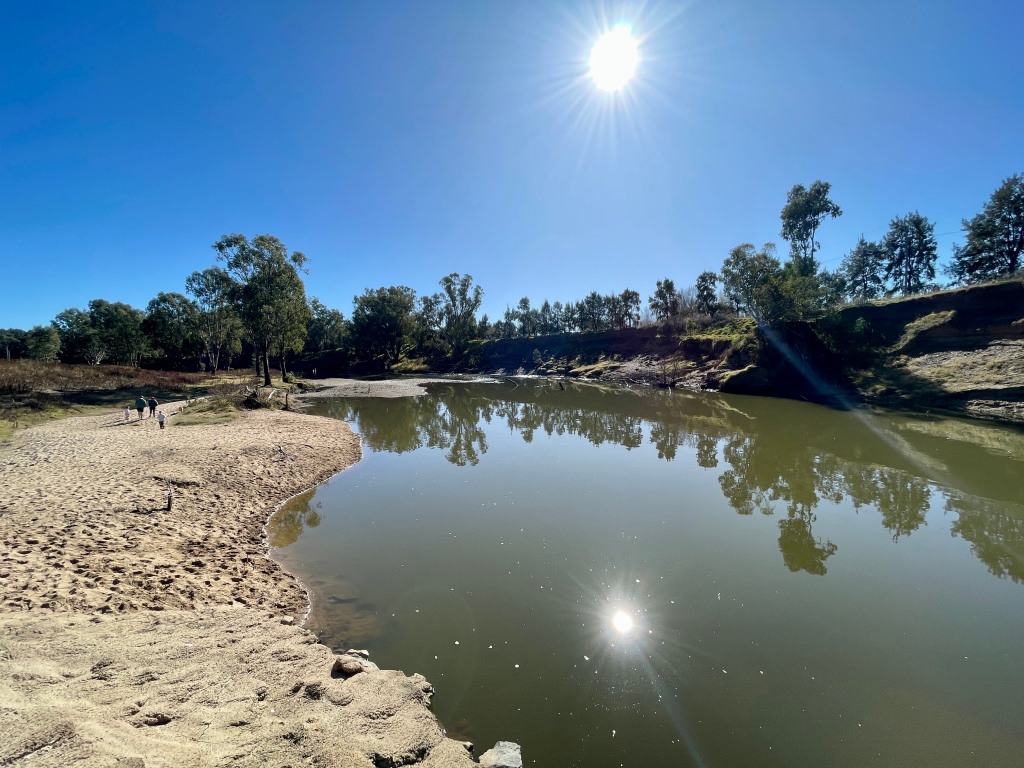
About an hour into my walk, I reached a stretch of path between the river and a paddock where a handful of remnant river red gums are still standing—big, old, gnarly giants who have witnessed all the changes that have occurred here since the early 1820s. I was listening to an interview with a Scottish artist about a storytelling project on Lewis (Scotland) when I heard an Australian magpie, purring, trilling and carolling through my earbuds. I stopped to listen to the songster. Scratchy voiced sulphur crested cockatoos joined in, swooping on to perches high in the tree tops, while the river made white noise over the shallows on the bend behind me, hidden behind dense thickets of dead weeds.
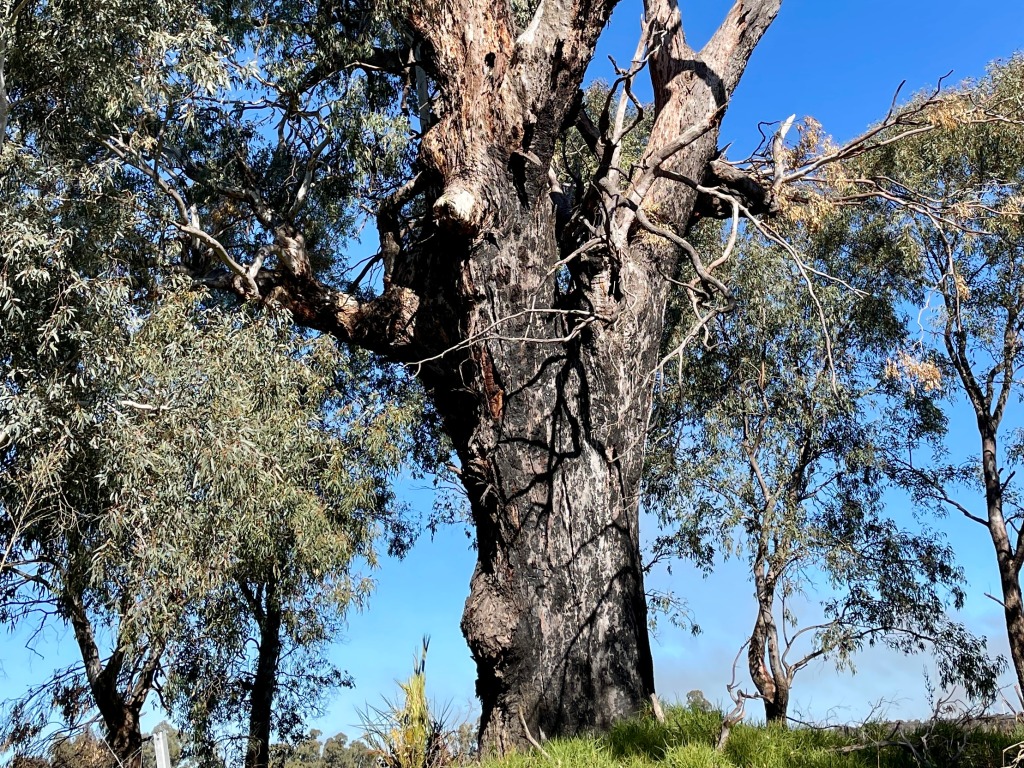
Just before reaching this spot, I passed a solo jogger having a loud phone conversation, a man wearing a big set of flashy headphones—the bass thumping, a young family with a dog and shrieking toddler, and a trio of women walking side-by-side, deep in conversation. No one was really listening—not even to each other.
If listening is a political, social and/or philosophical act as is suggested by some exploring this space*, what are we prepared to do (or not do) to ensure a greater presence of more-than-human voices in this environment, enriching the area’s sonic diversity and giving us all reason to stop? Do the benefits of that deliberate act then extend to listening better to each other as well? How do we make the space for this to happen?
I’ve walked and recorded the length of this river for many years, going back to my time as a young radio reporter in the early 1990s, and the impact of Anthrophonic sound is greater than ever. The push to develop the river corridor for the benefit of a few is coming at huge cost to those species who rely on a healthy riverine environment, and the river itself—a river system already tightly regulated and buttressed to ensure its dynamic, shape-shifting ways don’t further impact the humans clinging to its banks. As a result, the Wambuul is becoming quieter in those places where the competition from us is just too strong. We dominate the conversation.
I understand it’s often easier not to listen, to let things that are too hard to just wash over you, or to only hear what we want to hear. Choosing to listen is a deliberate act, that affords recognition and respect to those we listen to—human or more-than-human. It takes time. This brings me back to some of the things I’ve noted from those podcasts I was listening to—what quality of connection do we need to ensure with our natural world to ensure we have a viable future, and what kind of ancestors do we wish to be? Who will be our storytellers, and who will listen? And who will give a voice to those quickly losing theirs?
I’ll be on a panel at the Regional Futures Symposium: Artists in Volatile Landscapes at Casula Powerhouse Arts Centre on Saturday, 22 July. The panel is titled Listening Better / Artists as Transceivers. Information and tickets can be found on the Regional Futures website. One of the questions we’ll be exploring is How do artists enable us (humans) to be more attuned to environments and more-than-human world that we inhabit, to ensure a healthy and thriving eco-system?
MORE ABOUT MY REGIONAL FUTURES WORK, VATICINOR
Other reference works
Pulse of the Wetland/ Mosses and Marshes
Sonic Territories: Wambuul bila
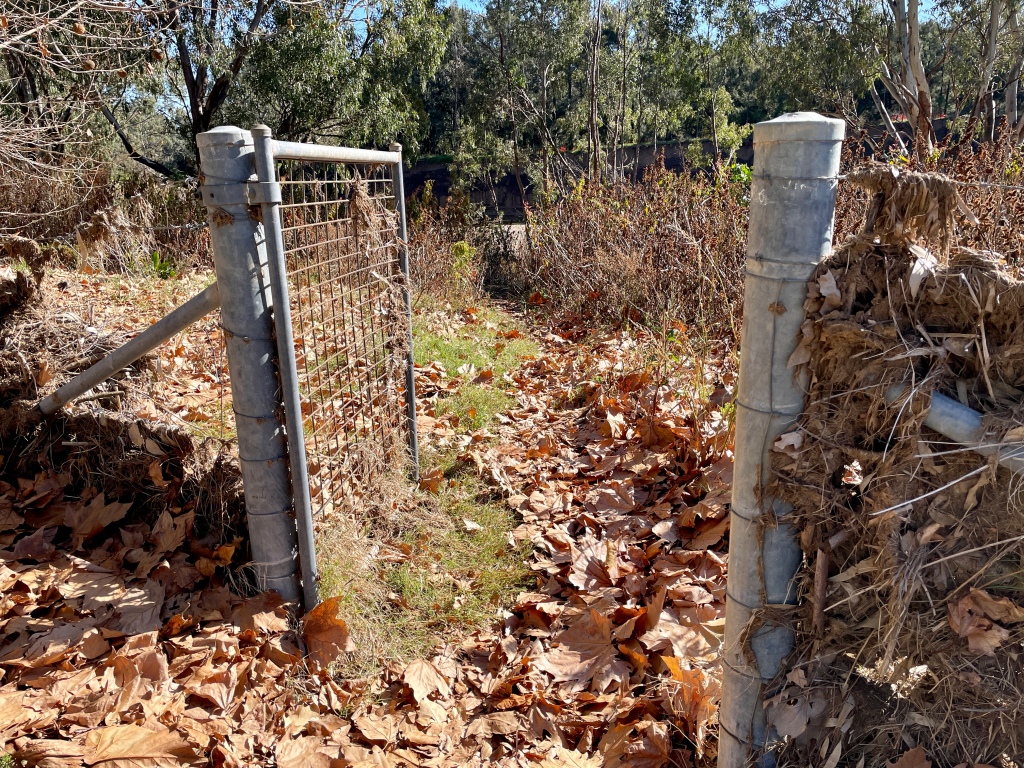
*References:
1000 Better Stories podcast, Scottish Communities Climate Action Network
The Right to Listen. Astrid Taylor. 2020. The New Yorker.
The Listening Biennale Inter-Asia Plus
The Hum of the World: A Philosophy of Listening. Lawrence Kramer. 2018. University of California Press.

